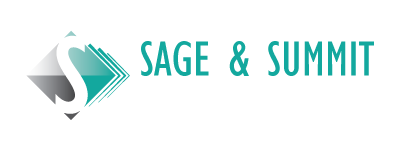Formalized in the 1990’s, Customer Journey Mapping has developed into a critical tool for organizations that are fully committed to customer satisfaction. By understanding and orchestrating an exceptional customer experience from the time of introduction through to delivery and beyond, organizations turn customers into advocates and references.
Can the same be done for employees? After all, good business theory today tells us we need to take care of our employees before our customers or we won’t have any customers. In fact, an employee’s journey with an organization is very similar to a customer’s journey. Both have introduction phases, some negotiation that leads to a contract; then the work gets done (a product or service is delivered, or an employee does their job). Ideally there are many stages in a customer’s and an employee’s life with the organization. The only difference is, a customer can possibly be for life, while an employee always exits the organization. And yes, both customers and employees have feelings, emotions, thoughts and needs that drive their behaviour. The reality is we care deeply about both groups and therefore understanding and mapping their journeys with our organization makes sense.
Before we get started, let’s consider what an Employee Journey is, and why we should bother understanding it.
Definition: An Employee Journey is sum of the thoughts, feelings, emotions and needs that your employees experience from the moment they connect with your organization to when they leave, and potentially beyond.
Objective: Optimize the experience, engagement, performance and cultural alignment of the employee through their Journey.
Who Cares? HR, Supervisors, Managers, the Executive, for sure the Employees, and anyone who cares about the performance, resilience and culture of the organization.
The Journey mapping needs to be specific to your organization, to its culture and its employees. The map and the activities that support the Employee Journey need to be absolutely consistent with the mission, vision and values of the organization. The interactions and actions encompassed in the Employee Journey provide an opportunity to express the culture of the organization. This needs to be an objective of the organization throughout the Journey.
The journey mapping needs to address different employee groups, and there are a couple of options to do this. The first option is to create specific Personas, or a list of attributes, for each group of employees that is different enough to warrant a unique Employee Journey. This can lead to the requirement for many personas such as Executives, Administration, Field or Plant Personnel, Supervisors, Technical … This can also lead to separation by age or other demographics. In the end it is very difficult to know where to draw the line for a unique persona requirement, so the quantity of personas and the ensuing discussion about persona types can become a blockade to developing and using the Journey map.
An alternative approach is to stick with one, or up to a maximum of three Employee Journeys. Multiple journey types are required when the actual interactions are so different that they can’t be adapted from one group to another. The logic behind fewer discrete journeys is that every employee is a human and they experience similar emotions and feelings regardless of position or demographics. This approach is also grounded on two key assumptions. First is that the Employee Journey Map is to be used as a high-level guide and support tool, not to define specific processes or procedures. In this way the map allows for personalization, as well as scalability. The second assumption is that the organization’s culture embraces empowerment. In this light, the map provides guidance to front line people (e.g., HR, Supervisors & Managers), but also empowers them to make individual decisions to personalize the outcomes.
For example, if it is determined that a $100 onboarding gift will be given to each employee to make them feel welcome, it would be up to the new employee’s supervisor to select the gift, therefore it doesn’t matter if they are an executive or a factory worker, the Journey map looks the same, but the outcome is personalized.
The Journey map itself can take on any shape or form that suits the organization. An ideal map is concise and contains a high-level overview in 1 or 2 pages. The map should have visual elements to clarify key items that are difficult to express in words. For certain elements like Onboarding, you may want to develop a separate detailed map to really nail down the specific interactions and how they will be perceived by the new employee.
An example of an Employee Journey map is shown below. The stages, interactions, contacts and emotions are not actual data, just representative of the concept. An explanation of the key map sections for this design is provided after the chart.


Stages: These are the main categories of the Employee Journey. Adaptation of the stages to your organization will be required, especially during the main career portion of their journey. The stages in this example are: Recruitment; Onboarding, Career Planning & Development, Key Employee Events, Exit; Post Employment.
- Interactions: This section lists specific touchpoints, or interactions for the employee. Thought should be given as to how specific the list should be to ensure capture of key interactions, but not overwhelm the map in details.
- Organization Contacts: This section highlights the main connection points for the Employee at each interaction. Direct contacts are shown in black, and supporting personnel are shown in grey. The visual is to give a quick indication of multiple contacts in an interaction or handoff points to highlight communication challenge points.
- Emotions: This section is to provide a visual representation of 2 or 3 of the Employee’s key emotions. Ideally the map will highlight the inflection points where positive emotions cross over negative or low confidence emotions. In this example two sets of emotion flows are shown with the thought that hiring and onboarding are different than the normal work experience. Think closely about laying out this section as it can be very valuable when designing programs and communication plans.
- Emotions & Thoughts: Here you can list specific emotions for each interaction as well as the Employee’s thoughts. Consider their dreams, aspirations and fears to best understand their state of mind.
- Employee’s Needs: Be explicit about what the Employee needs for each interaction. Consider items like information, communication, response time, honest feedback etc.
- Organization Objectives: Here you can document what the Organization wants to achieve with each interaction, adding up to overall objectives for the Employee Journey. Unless the Organization gets what it needs, it will not be a positive relationship.
- Organization Actions: Keep this as a high-level view of actions taken by the Organization at each Interaction. Mention of specific software used is helpful to clarify what/how work is being done, but specific processes and work plans should be in supporting documents.
- Employee Engagement Inputs: Highlight what the Employee needs at each Interaction to keep their engagement high.
- Gaps & Opportunities: Not truly a part of the Employee Journey, but while you are taking the time to map the journey make sure to capture opportunities to improve the Journey. This section would typically be removed once the Journey is being shared with the broader organization, and improvement opportunities would be rolled into Organizational objectives.
Developing an Employee Journey Map should be an interesting, fun and inclusive exercise. Involve as many people as possible including the subject matter experts, your existing employees. Keep the map up to date as the organization changes and matures and use the map as a tool for training supervisors and managers in their most important role of supporting and developing their teams.

